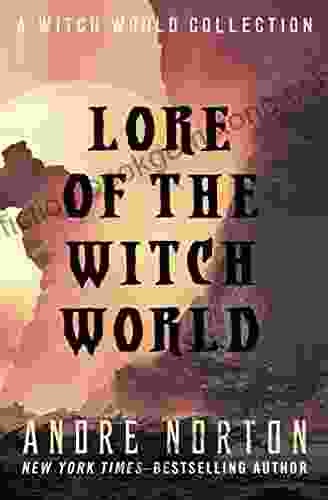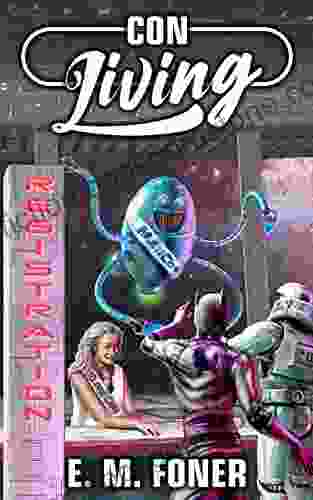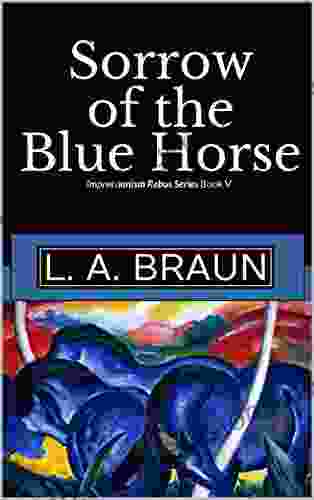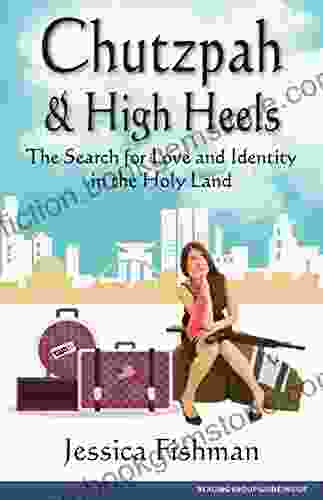How To Format Your Interior For Pod Printers: The Self-Publisher's Guide

Formatting your book's interior is an important step in the self-publishing process. It ensures that your book looks professional and readable, and that it meets the requirements of print-on-demand (POD) printers.
5 out of 5
| Language | : | English |
| File size | : | 752 KB |
| Text-to-Speech | : | Enabled |
| Enhanced typesetting | : | Enabled |
| Print length | : | 238 pages |
| Lending | : | Enabled |
| Screen Reader | : | Supported |
In this guide, we'll cover everything you need to know about formatting your book's interior for POD printers, including:
- Page setup
- Margins
- Fonts
- Line spacing
- Headers and footers
- Trim size
- Bleed
- Gutter
- Spine width
Page Setup
The first step in formatting your book's interior is to set up the page. This includes choosing a trim size, orientation, and margins.
The trim size is the finished size of your book, including the covers. Common trim sizes for books include 6x9 inches, 8.5x11 inches, and 5.5x8.5 inches.
The orientation is the direction of the text on the page. Most books are printed in portrait orientation, but landscape orientation can be used for certain types of books, such as cookbooks or photo books.
The margins are the spaces around the edges of the page. Margins should be large enough to make the text easy to read, but not so large that they waste space.
Margins
Margins are the spaces around the edges of the page. Margins should be large enough to make the text easy to read, but not so large that they waste space.
The standard margins for a book are:
- Top: 1 inch
- Bottom: 1 inch
- Left: 1.25 inches
- Right: 1.25 inches
These margins can be adjusted to fit the specific needs of your book. For example, you may want to increase the top margin if you are including a header, or decrease the left margin if you are using a narrow trim size.
Fonts
The font you choose for your book's interior is important for both readability and aesthetics.
For body text, it is best to use a serif font. Serif fonts have small lines at the ends of their strokes, which makes them easier to read on printed pages.
Some popular serif fonts for body text include:
- Times New Roman
- Georgia
- Palatino
- Garamond
For headings and subheadings, you can use a sans-serif font. Sans-serif fonts do not have small lines at the ends of their strokes, which makes them more modern and eye-catching.
Some popular sans-serif fonts for headings and subheadings include:
- Arial
- Helvetica
- Calibri
- Verdana
Line Spacing
Line spacing is the amount of space between lines of text. Line spacing should be large enough to make the text easy to read, but not so large that it wastes space.
The standard line spacing for body text is 1.5 lines. This means that there is 1.5 times the height of the font size between each line of text.
Line spacing can be adjusted to fit the specific needs of your book. For example, you may want to increase the line spacing if you are using a small font size or if you are including a lot of graphics.
Headers and Footers
Headers and footers are the text that appears at the top and bottom of each page, respectively.
Headers typically include the book title, author name, and page number. Footers can include the same information, as well as additional information such as the copyright notice or the website address.
Headers and footers should be formatted consistently throughout the book. The font size and style should be the same, and the margins should be the same.
Trim Size
The trim size is the finished size of your book, including the covers. Common trim sizes for books include 6x9 inches, 8.5x11 inches, and 5.5x8.5 inches.
When choosing a trim size, it is important to consider the content of your book and the target audience. For example, a large trim size may be appropriate for a coffee table book or a children's book with lots of illustrations. A smaller trim size may be more appropriate for a novel or a business book.
Bleed
Bleed is the area of the page that extends beyond the trim size. Bleed is used to create the illusion that the image or text is printed all the way to the edge of the page.
If you are using bleed in your book, it is important to extend the image or text beyond the trim size by at least 0.125 inches. This will ensure that the image or text is not cut off when the book is trimmed.
Gutter
The gutter is the space between the pages of a book. The gutter is necessary to allow the book to be opened and closed without damaging the binding.
The standard gutter size for a book is 0.5 inches. This size can be adjusted to fit the specific needs of your book, but it is important to make sure that the gutter is wide enough to allow the book to be opened and closed easily.
Spine Width
The spine width is the thickness of the book's spine. The spine width is determined by the number of pages in the book and the thickness of the paper.
The standard spine width for a book is 0.5 inches. This size can be adjusted to fit the specific needs of your book, but it is important to make sure that the spine width is wide enough to accommodate the number of pages in the book.
Formatting your book's interior for POD printers is an important step in the self-publishing process. By following the tips in this guide, you can create a professional-looking book that is easy to read and meets the requirements of POD printers.
5 out of 5
| Language | : | English |
| File size | : | 752 KB |
| Text-to-Speech | : | Enabled |
| Enhanced typesetting | : | Enabled |
| Print length | : | 238 pages |
| Lending | : | Enabled |
| Screen Reader | : | Supported |
Do you want to contribute by writing guest posts on this blog?
Please contact us and send us a resume of previous articles that you have written.
 Best Book
Best Book Page Flip
Page Flip Bookshelf
Bookshelf Literary loom
Literary loom Chapter
Chapter Bookish
Bookish PageTurner
PageTurner Bibliophile
Bibliophile Story
Story Inkwell
Inkwell Bookworm
Bookworm Labyrinth
Labyrinth Plot Twist
Plot Twist Prose
Prose Paperback
Paperback Storyteller
Storyteller Sanctuary
Sanctuary Fiction
Fiction Reading
Reading Chronicle
Chronicle Read
Read Kingsley M Bray
Kingsley M Bray Amy Odell
Amy Odell Sally K May
Sally K May Minerva Peters
Minerva Peters Vito Adriaensens
Vito Adriaensens Dale Sattler
Dale Sattler Alfred Hitchcock
Alfred Hitchcock Tim Rock
Tim Rock J N Chaney
J N Chaney Ross Gay
Ross Gay Alexey Osadchuk
Alexey Osadchuk Thomas Powers
Thomas Powers Alexandria House
Alexandria House Charles Martin
Charles Martin Eve Vaughn
Eve Vaughn Murray Stewart
Murray Stewart Joyce Hicks
Joyce Hicks Allie Allen
Allie Allen Terry Gilliam
Terry Gilliam Alicia Hall
Alicia Hall Lalita Tademy
Lalita Tademy Amy Burkert
Amy Burkert Aminah Smith
Aminah Smith Levi Zelkind
Levi Zelkind Robert Pringle
Robert Pringle Alfred Russel Wallace
Alfred Russel Wallace Alexander Mackenzie
Alexander Mackenzie Bethany Robertson
Bethany Robertson Sidney Huntington
Sidney Huntington Rukmini Vijayakumar
Rukmini Vijayakumar Lindsay Ellis
Lindsay Ellis Robert Blumenfeld
Robert Blumenfeld Ma Jian
Ma Jian Anand Pandian
Anand Pandian Allen Rucker
Allen Rucker Alexandra Sokoloff
Alexandra Sokoloff Warren Kozak
Warren Kozak G P Hudson
G P Hudson Terry Schott
Terry Schott Steven Awalt
Steven Awalt M Gaspary
M Gaspary Tom Heintjes
Tom Heintjes Ronni L Gordon
Ronni L Gordon Matthew Gabriele
Matthew Gabriele Alice Albinia
Alice Albinia Jamie Ibson
Jamie Ibson Meredith Hall
Meredith Hall Alistair Mcguinness
Alistair Mcguinness Allan R Ellenberger
Allan R Ellenberger Allan Haley
Allan Haley Chris Peterson
Chris Peterson Alexander Frater
Alexander Frater Leticia Ordaz
Leticia Ordaz Jeandre Gerber
Jeandre Gerber Lauren Wilkinson
Lauren Wilkinson Jo Weldon
Jo Weldon L A Braun
L A Braun Amaka Samrah Linus
Amaka Samrah Linus C Vann Woodward
C Vann Woodward Rysa Walker
Rysa Walker Grahame Booth
Grahame Booth Frances F Dunwell
Frances F Dunwell Amanda B Cosgrove
Amanda B Cosgrove John Varley
John Varley Alexander Von Humboldt
Alexander Von Humboldt Tessa Dare
Tessa Dare Rabindranath Tagore
Rabindranath Tagore Yoshiko Uchida
Yoshiko Uchida Kevin Steverson
Kevin Steverson Cormac Mccarthy
Cormac Mccarthy Vijay Kumar
Vijay Kumar Bill Zarchy
Bill Zarchy Eric Flint
Eric Flint Simon Goldhill
Simon Goldhill Christine Chitnis
Christine Chitnis Helen Freeman
Helen Freeman Gabriella Catalano
Gabriella Catalano Grayson Sinclair
Grayson Sinclair Ian Anderson
Ian Anderson Alison Lumbatis
Alison Lumbatis Mike Fu
Mike Fu M M Kaye
M M Kaye Michael V Hayden
Michael V Hayden Ly Tran
Ly Tran Amy Poehler
Amy Poehler Allison Hong Merrill
Allison Hong Merrill Masa Seikou
Masa Seikou Sherilyn Connelly
Sherilyn Connelly Eleanor Roosevelt
Eleanor Roosevelt Amaryllis Fox
Amaryllis Fox Alfred Gell
Alfred Gell Allan Kaster
Allan Kaster Krista Luna
Krista Luna Amanda Vaill
Amanda Vaill J A Konrath
J A Konrath Bruce Larson
Bruce Larson Clary Illian
Clary Illian Brandon Sanderson
Brandon Sanderson Anna Mason
Anna Mason Rod Reynolds
Rod Reynolds Michael Powell
Michael Powell Allan Ira Bass
Allan Ira Bass Alexander Monro
Alexander Monro Alina Wheeler
Alina Wheeler Alexander Armstrong
Alexander Armstrong Ali Dowlatshahi
Ali Dowlatshahi Margaret Winslow
Margaret Winslow Kevin Hearne
Kevin Hearne Marguerite Penrose
Marguerite Penrose Amy Kuivalainen
Amy Kuivalainen Jeff Chenault
Jeff Chenault Alison King
Alison King Richard Bell
Richard Bell Karin Tidbeck
Karin Tidbeck K Gorman
K Gorman Laquette
Laquette Christopher Lee Philips
Christopher Lee Philips Jade Asikiwe
Jade Asikiwe Bill Cunningham
Bill Cunningham Charles Evans
Charles Evans Thomas Hope
Thomas Hope Amanda Vanever
Amanda Vanever Jeff Greenwald
Jeff Greenwald Paul Doty
Paul Doty Robb Pearlman
Robb Pearlman Rana Mitter
Rana Mitter Alice Procter
Alice Procter Hans Ulrich Obrist
Hans Ulrich Obrist Julia Quinn
Julia Quinn Alexandre Roger
Alexandre Roger Calum Waddell
Calum Waddell Erik Weihenmayer
Erik Weihenmayer Peter Schiessl
Peter Schiessl Christina Ezrahi
Christina Ezrahi Arlen Gargagliano
Arlen Gargagliano T E Bakutis
T E Bakutis Allan A Macfarlan
Allan A Macfarlan Amy Chavez
Amy Chavez Anne M Scott
Anne M Scott Mz Lady P
Mz Lady P Kimberly Chrisman Campbell
Kimberly Chrisman Campbell Ammianus Marcellinus
Ammianus Marcellinus Hisham Matar
Hisham Matar Kimberly Brown
Kimberly Brown Brad Prager
Brad Prager Amin Maalouf
Amin Maalouf W E B Griffin
W E B Griffin Esi Edugyan
Esi Edugyan Mark Edlitz
Mark Edlitz Allison Branscombe
Allison Branscombe Peter Cronin
Peter Cronin Robert K Massie
Robert K Massie Alice Wong
Alice Wong W J Lundy
W J Lundy Alison Lee
Alison Lee Kenny Roy
Kenny Roy Andrea Coke
Andrea Coke Amaya Black
Amaya Black Patricia Konczynski Jennifer Herbst
Patricia Konczynski Jennifer Herbst Alvaro Castagnet
Alvaro Castagnet Alistair Maclean
Alistair Maclean Alexander Sergeant
Alexander Sergeant Amy Butler
Amy Butler Helen Mcginn
Helen Mcginn John Jackson Miller
John Jackson Miller Jeff A Menges
Jeff A Menges Dee Brown
Dee Brown Alyson Belle
Alyson Belle Amy Mckinley
Amy Mckinley Mark De Silva
Mark De Silva Amit Offir
Amit Offir Alwyn Crawshaw
Alwyn Crawshaw William D Crump
William D Crump M E Thorne
M E Thorne Emily Grabatin
Emily Grabatin Stephen Michael Shearer
Stephen Michael Shearer Alice Walker
Alice Walker Thomas Sanchez
Thomas Sanchez Stephen Birmingham
Stephen Birmingham Alexandra Fuller
Alexandra Fuller Gerry Souter
Gerry Souter Aliette De Bodard
Aliette De Bodard Andrew Gillsmith
Andrew Gillsmith Alyssa Campbell
Alyssa Campbell Suzie Mackenzie
Suzie Mackenzie Allison Murray
Allison Murray Alexandra Garbarini
Alexandra Garbarini Johan Huizinga
Johan Huizinga L Smith
L Smith Tracy Osborn
Tracy Osborn Peter L Winkler
Peter L Winkler Christopher Hopper
Christopher Hopper Elmore Leonard
Elmore Leonard G Michael Dobbs
G Michael Dobbs Alistair Moffat
Alistair Moffat Elizabeth Taylor
Elizabeth Taylor Victor Villasenor
Victor Villasenor Amanda J Spedding
Amanda J Spedding Kayla Allen
Kayla Allen Jerry Pournelle
Jerry Pournelle Pauli Murray
Pauli Murray Douglas Johnson
Douglas Johnson Jesmyn Ward
Jesmyn Ward Johanna Garton
Johanna Garton Michael D Pitt
Michael D Pitt Jesse Fox
Jesse Fox Bern Will Brown
Bern Will Brown Robert Chick
Robert Chick Chanel Cleeton
Chanel Cleeton Casey Watson
Casey Watson Amanda Barnes
Amanda Barnes Amelia Pang
Amelia Pang Margaret Bunson
Margaret Bunson Dara Mcanulty
Dara Mcanulty Allison Markin Powell
Allison Markin Powell Rosi Jarussi
Rosi Jarussi Navid Kermani
Navid Kermani Ana Victoria Calderon
Ana Victoria Calderon Amanda Hislop
Amanda Hislop Dreamstorm Publications
Dreamstorm Publications Glyn Macey
Glyn Macey Jim Stott
Jim Stott Amir Eshel
Amir Eshel Ali Bey
Ali Bey Ashley Niedringhaus
Ashley Niedringhaus Alison Weir
Alison Weir Gordon K Hirabayashi
Gordon K Hirabayashi Lan Yan
Lan Yan Bas Bakker
Bas Bakker Oleg Atbashian
Oleg Atbashian Robyn Davidson
Robyn Davidson Amber Ruffin
Amber Ruffin John Steinbeck
John Steinbeck David Bergsland
David Bergsland Steven Howell
Steven Howell Richard Price
Richard Price Andre Norton
Andre Norton Ali Duffy
Ali Duffy Alicia Beckton
Alicia Beckton Anchee Min
Anchee Min Karen Falk
Karen Falk Amira Hass
Amira Hass Reese Patton
Reese Patton Terry Mcmillan
Terry Mcmillan Francis A Schaeffer
Francis A Schaeffer Allan Neuwirth
Allan Neuwirth Lydia Sloan Cline
Lydia Sloan Cline Grace M Cho
Grace M Cho Martin Gayford
Martin Gayford Rahna Reiko Rizzuto
Rahna Reiko Rizzuto Sharon Lee
Sharon Lee Attica Locke
Attica Locke Yolanda Lopez
Yolanda Lopez I O Adler
I O Adler Wolfedale Press
Wolfedale Press Tom Miller
Tom Miller Lisa Pietsch
Lisa Pietsch William C Dietz
William C Dietz Lance Richardson
Lance Richardson Fay Simpson
Fay Simpson Alida Nugent
Alida Nugent Burne Hogarth
Burne Hogarth Peter Egan
Peter Egan Allan Zola Kronzek
Allan Zola Kronzek Boye Lafayette De Mente
Boye Lafayette De Mente Jennifer Saginor
Jennifer Saginor John Bester
John Bester Brynne Asher
Brynne Asher Alois Senefelder
Alois Senefelder Nicole Lynn
Nicole Lynn Christopher Bolton
Christopher Bolton Christopher Finch
Christopher Finch Alphonso Brown
Alphonso Brown John H Cunningham
John H Cunningham Susan Elizabeth Phillips
Susan Elizabeth Phillips Raul Caceres M D
Raul Caceres M D Faya Causey
Faya Causey Samira Shackle
Samira Shackle Harriet Denison
Harriet Denison Anand Prahlad
Anand Prahlad Maureen Paton
Maureen Paton Amy S F Lutz
Amy S F Lutz Studio Atelier 21
Studio Atelier 21 Colleen Hoover
Colleen Hoover Alison Freer
Alison Freer Justin Eisinger
Justin Eisinger Alexander H Rosenberg
Alexander H Rosenberg Liza Gershman
Liza Gershman Alyssa Shelasky
Alyssa Shelasky James Rollins
James Rollins Alexandra Warren
Alexandra Warren Alia Thabit
Alia Thabit Ortrun Egelkraut
Ortrun Egelkraut Deidre M Pike
Deidre M Pike Theresa Weir
Theresa Weir E J Fleming
E J Fleming Nancy Jooyoun Kim
Nancy Jooyoun Kim Nigel Randell
Nigel Randell International Learning Academy
International Learning Academy Amy B Scher
Amy B Scher Michelle Elaine
Michelle Elaine Sachiko Toyozato
Sachiko Toyozato Alfred Habegger
Alfred Habegger Kenji Yoshino
Kenji Yoshino Kimberly Adams
Kimberly Adams Kathryn Cramer
Kathryn Cramer Allison Brennan
Allison Brennan Karrine Steffans
Karrine Steffans Parker J Cole
Parker J Cole Karine Jean Pierre
Karine Jean Pierre Seth Emerson
Seth Emerson Alyn Shipton
Alyn Shipton Duncan M Hamilton
Duncan M Hamilton Amy M Davis
Amy M Davis Bill Yenne
Bill Yenne Peter Bacho
Peter Bacho Simon J Hall
Simon J Hall Joshua Jelly Schapiro
Joshua Jelly Schapiro Anders De La Motte
Anders De La Motte Kate Field
Kate Field Theresa Goodrich
Theresa Goodrich E M Foner
E M Foner Megan Massacre
Megan Massacre Andre Gonzalez
Andre Gonzalez Alexandra Shulman
Alexandra Shulman Alexander Weinstein
Alexander Weinstein Amelia Jones
Amelia Jones Maxwell Ayrton
Maxwell Ayrton Alma Nilsson
Alma Nilsson Amanda Milo
Amanda Milo Lan Sluder
Lan Sluder Bob Reynolds
Bob Reynolds Edd Staton
Edd Staton Kindle Edition
Kindle Edition Iwao Takamoto
Iwao Takamoto Alexander Speltz
Alexander Speltz Beth Brown Reinsel
Beth Brown Reinsel Nickey Knighton
Nickey Knighton Ronald Florence
Ronald Florence Amber Brock
Amber Brock George Puckett
George Puckett Aline Ash
Aline Ash Winifred Aldrich
Winifred Aldrich Jared Mandani
Jared Mandani Jan Dalley
Jan Dalley Tiye Love
Tiye Love Jessi Klein
Jessi Klein Montana Hodges
Montana Hodges Amber Easby
Amber Easby Alexis Schlegel
Alexis Schlegel Hunter Biden
Hunter Biden Jason Vachon
Jason Vachon Hitomi Shida
Hitomi Shida Gini Koch
Gini Koch Pamela Spiro Wagner
Pamela Spiro Wagner Robert J Sawyer
Robert J Sawyer Alison Ross
Alison Ross Amanda Bouchet
Amanda Bouchet Dianne Duvall
Dianne Duvall Jonathan Gardiner
Jonathan Gardiner Dov S S Simens
Dov S S Simens Alice Hoffman
Alice Hoffman Amor Fenn
Amor Fenn Andie Powers
Andie Powers Joshua Jay
Joshua Jay Derek Pardue
Derek Pardue Christie Golden
Christie Golden Alfred Bester
Alfred Bester Stephen Mason
Stephen Mason Amihan Balasabas
Amihan Balasabas Carol Belanger Grafton
Carol Belanger Grafton Cap Daniels
Cap Daniels Katrina Jackson
Katrina Jackson Margery Leveen Sher
Margery Leveen Sher Guy Wann
Guy Wann Andra Bucci
Andra Bucci Phil Huddleston
Phil Huddleston Christopher Golden
Christopher Golden Patrick Devaney
Patrick Devaney Hazel V Carby
Hazel V Carby Paul Tremblay
Paul Tremblay Jade Blue
Jade Blue Rudy Wiebe
Rudy Wiebe Paul Adams
Paul Adams Anna Viroubova
Anna Viroubova Amanda Brooks
Amanda Brooks Kenneth Cline
Kenneth Cline Chris Vines
Chris Vines Peter Lane
Peter Lane Hazel Soan
Hazel Soan Laura Dave
Laura Dave Alun Anderson
Alun Anderson Lucia Peters
Lucia Peters Allegra Kent
Allegra Kent Kenneth E Hall
Kenneth E Hall Amanda Kuster
Amanda Kuster Raine Thomas
Raine Thomas America Ferrera
America Ferrera Arlo Quinn
Arlo Quinn Elamin Abdelmahmoud
Elamin Abdelmahmoud Stan Grant
Stan Grant William Bennet Stevenson
William Bennet Stevenson Emily Crafts
Emily Crafts Amanda Grange
Amanda Grange Alicia Malone
Alicia Malone Barbara Hambly
Barbara Hambly Rachel Rhys
Rachel Rhys Will Dodson
Will Dodson Jenny Handy
Jenny Handy Alexander Bennett
Alexander Bennett Eva Taylor
Eva Taylor Alice Henderson
Alice Henderson Amanda Leduc
Amanda Leduc Anthony Galvin
Anthony Galvin Tiffani Goff
Tiffani Goff Alexandra Silber
Alexandra Silber Michael Pronko
Michael Pronko Jessica Fishman
Jessica Fishman Dave Jay
Dave Jay Lianne Dillsworth
Lianne Dillsworth David Larson
David Larson R D Brady
R D Brady Margaret B Blackman
Margaret B Blackman Johannes Vloothuis
Johannes Vloothuis Allison Alexander
Allison Alexander Alyona Nickelsen
Alyona Nickelsen Emily Ratajkowski
Emily Ratajkowski
Light bulbAdvertise smarter! Our strategic ad space ensures maximum exposure. Reserve your spot today!
 Camden MitchellFollow ·14.2k
Camden MitchellFollow ·14.2k Yasunari KawabataFollow ·5.2k
Yasunari KawabataFollow ·5.2k John UpdikeFollow ·18k
John UpdikeFollow ·18k Phil FosterFollow ·16.7k
Phil FosterFollow ·16.7k David BaldacciFollow ·11.1k
David BaldacciFollow ·11.1k Ibrahim BlairFollow ·18.6k
Ibrahim BlairFollow ·18.6k Joshua ReedFollow ·12.8k
Joshua ReedFollow ·12.8k Jamie BlairFollow ·7.5k
Jamie BlairFollow ·7.5k

 Kyle Powell
Kyle PowellThe Enchanting Realms of Witch World: A Collector's Guide...
In the vast and...

 Ethan Mitchell
Ethan MitchellSwap Night on Union Station EarthCent Ambassador 19: A...
On a crisp autumn evening in the...

 Gage Hayes
Gage HayesThe Last Reaper: A Military SciFi Epic That Will Leave...
The Last Reaper...

 Christopher Woods
Christopher WoodsUnveiling the Masterpiece: The Original Pattern Bible by...
In the realm of pattern design, there...

 William Golding
William GoldingDiscover the Unfathomable Con Living Earthcent Universe:...
An Expansive Cosmic Tapestry In the...
5 out of 5
| Language | : | English |
| File size | : | 752 KB |
| Text-to-Speech | : | Enabled |
| Enhanced typesetting | : | Enabled |
| Print length | : | 238 pages |
| Lending | : | Enabled |
| Screen Reader | : | Supported |














